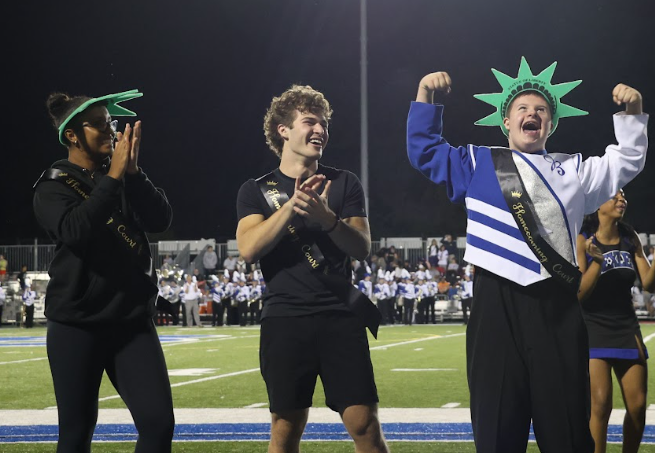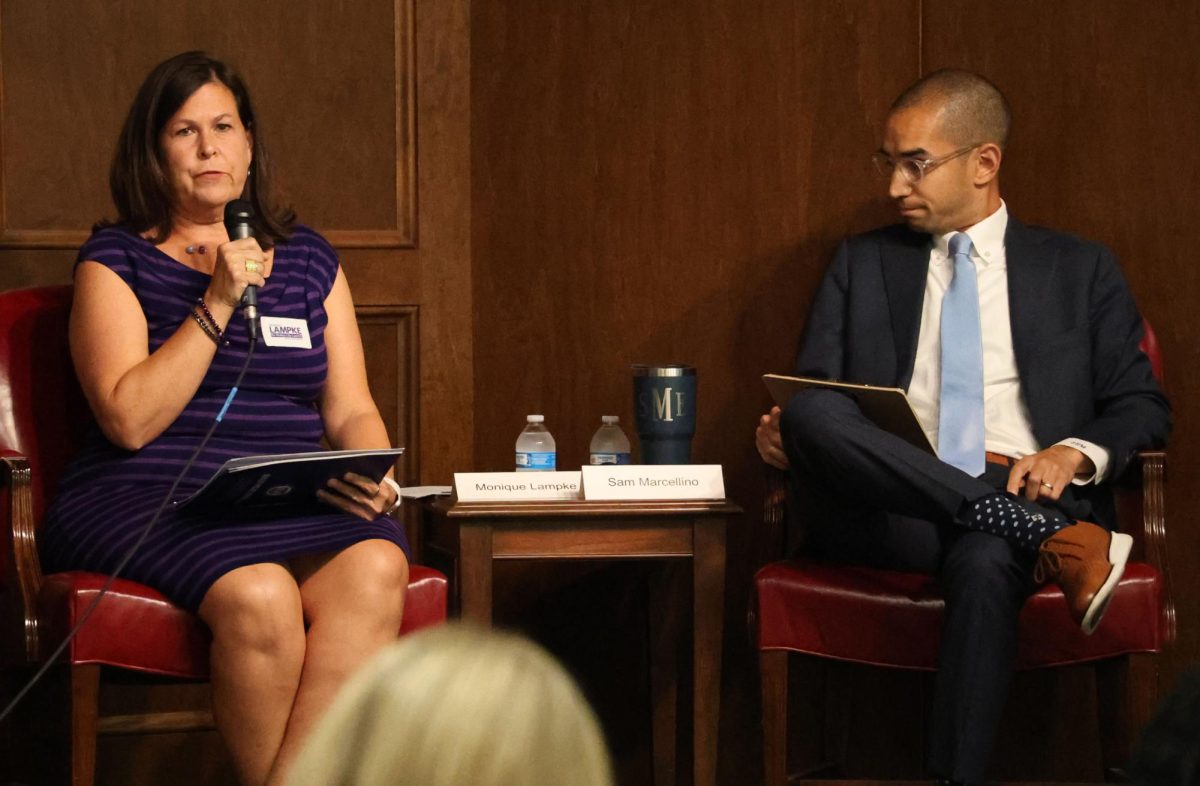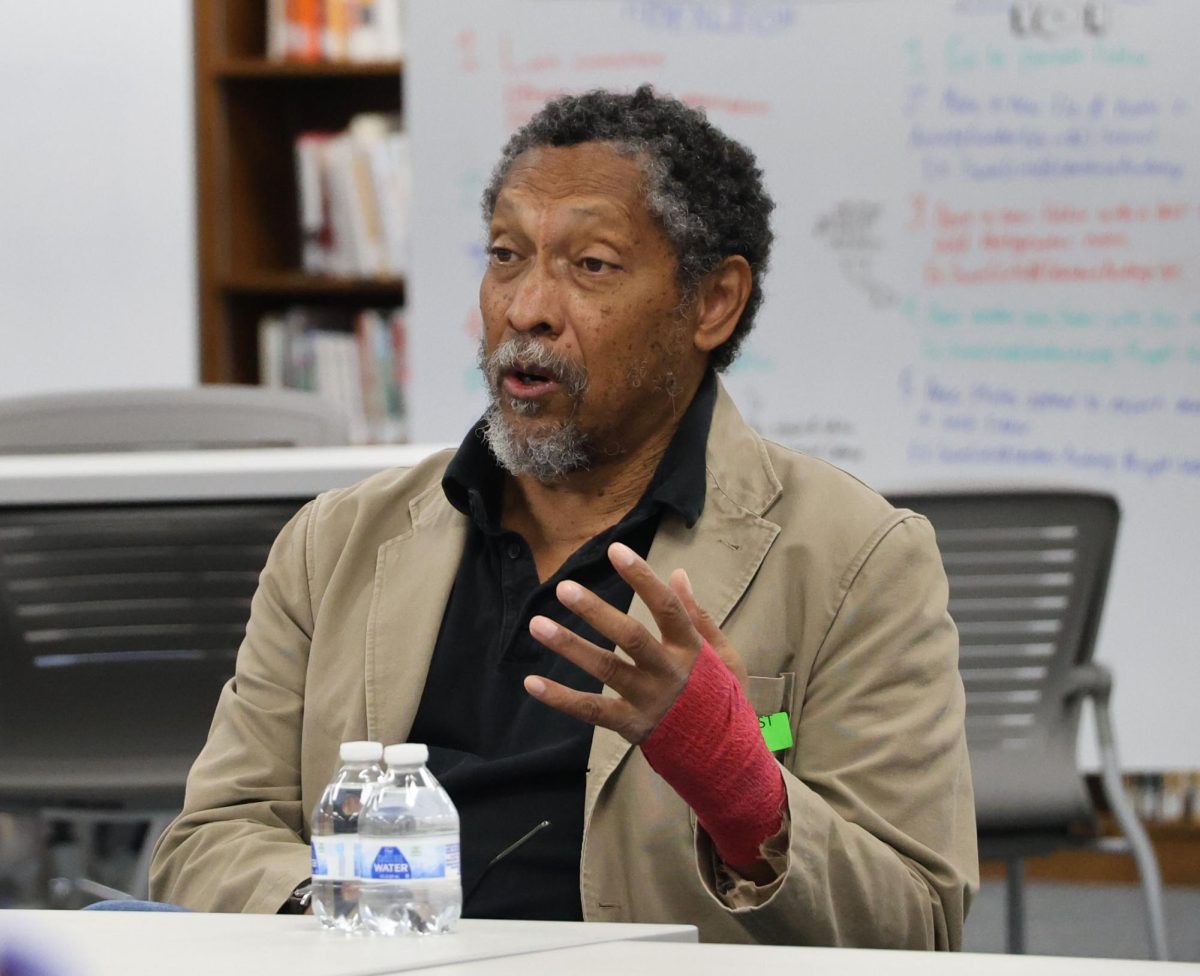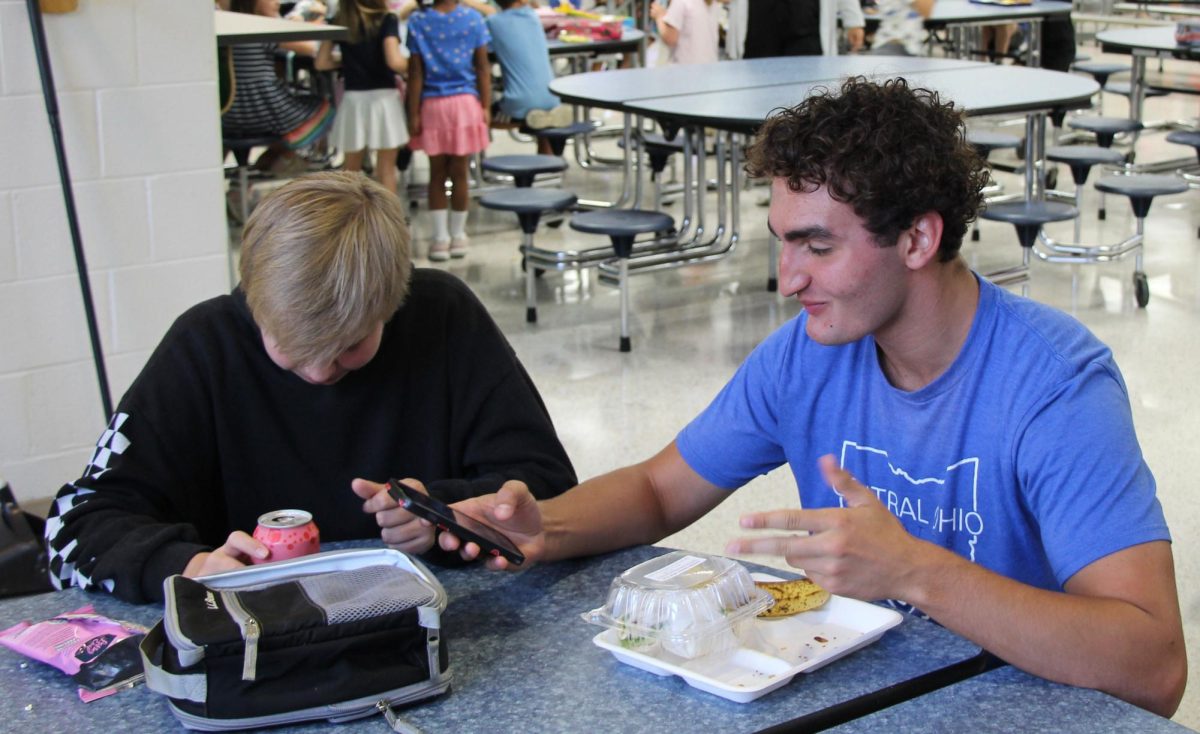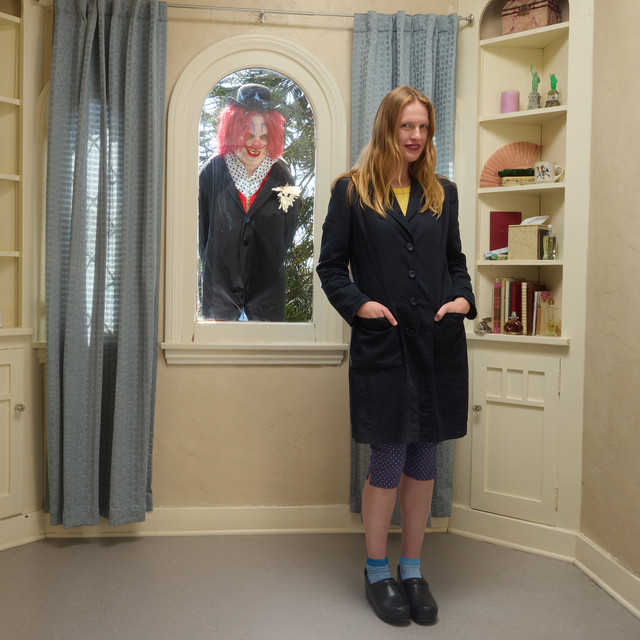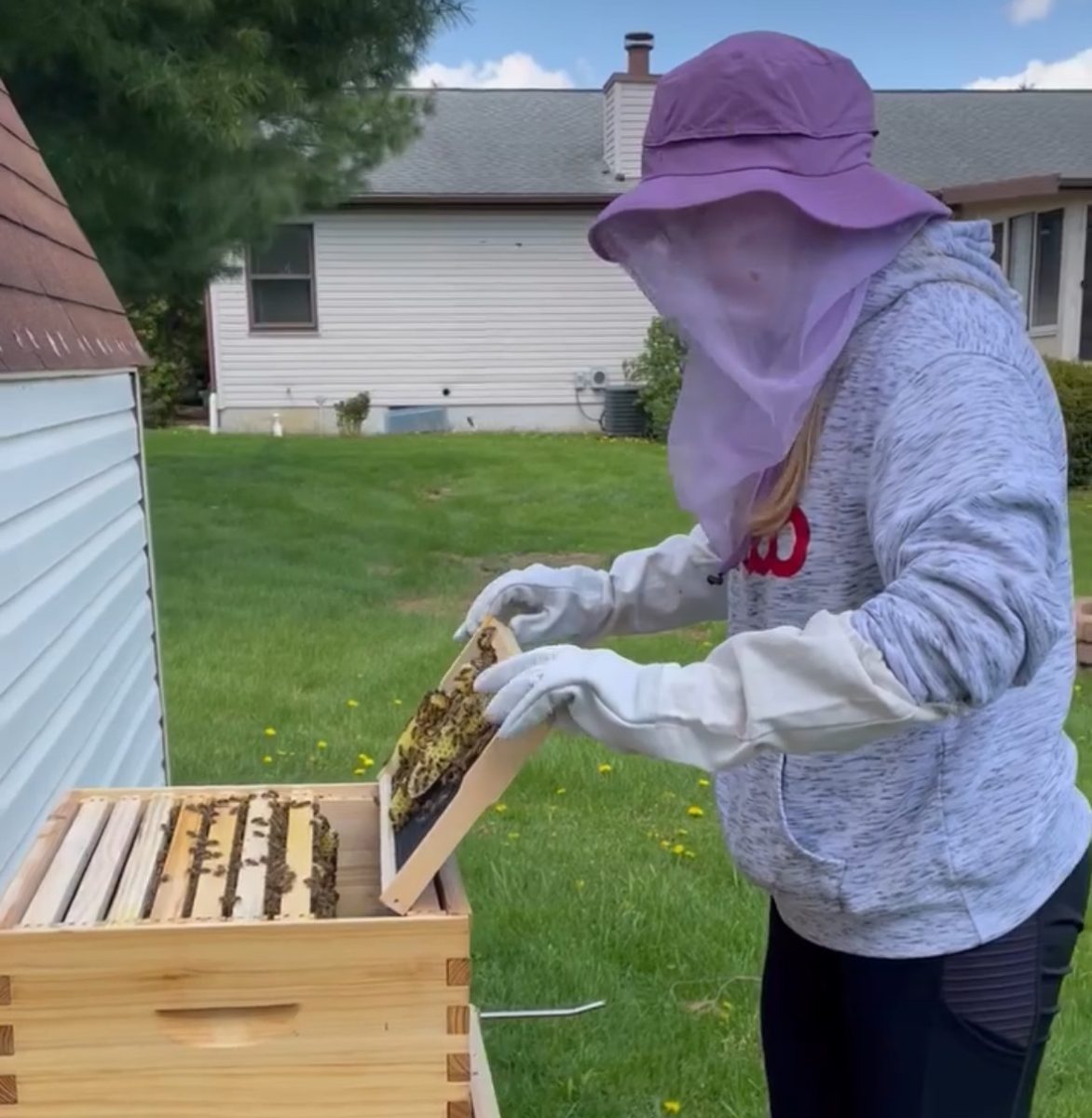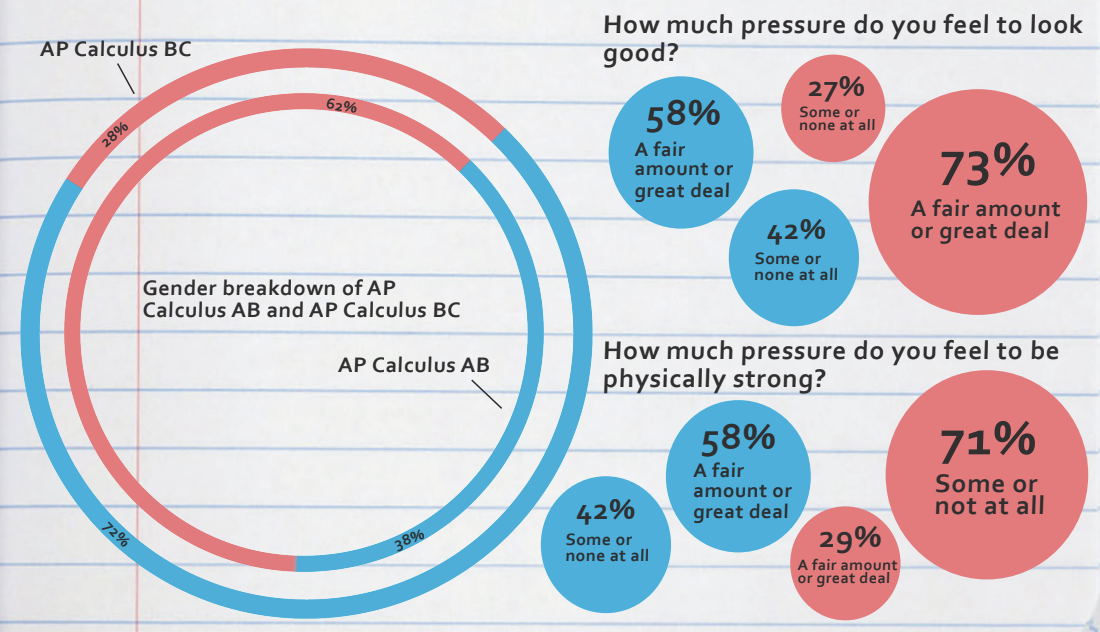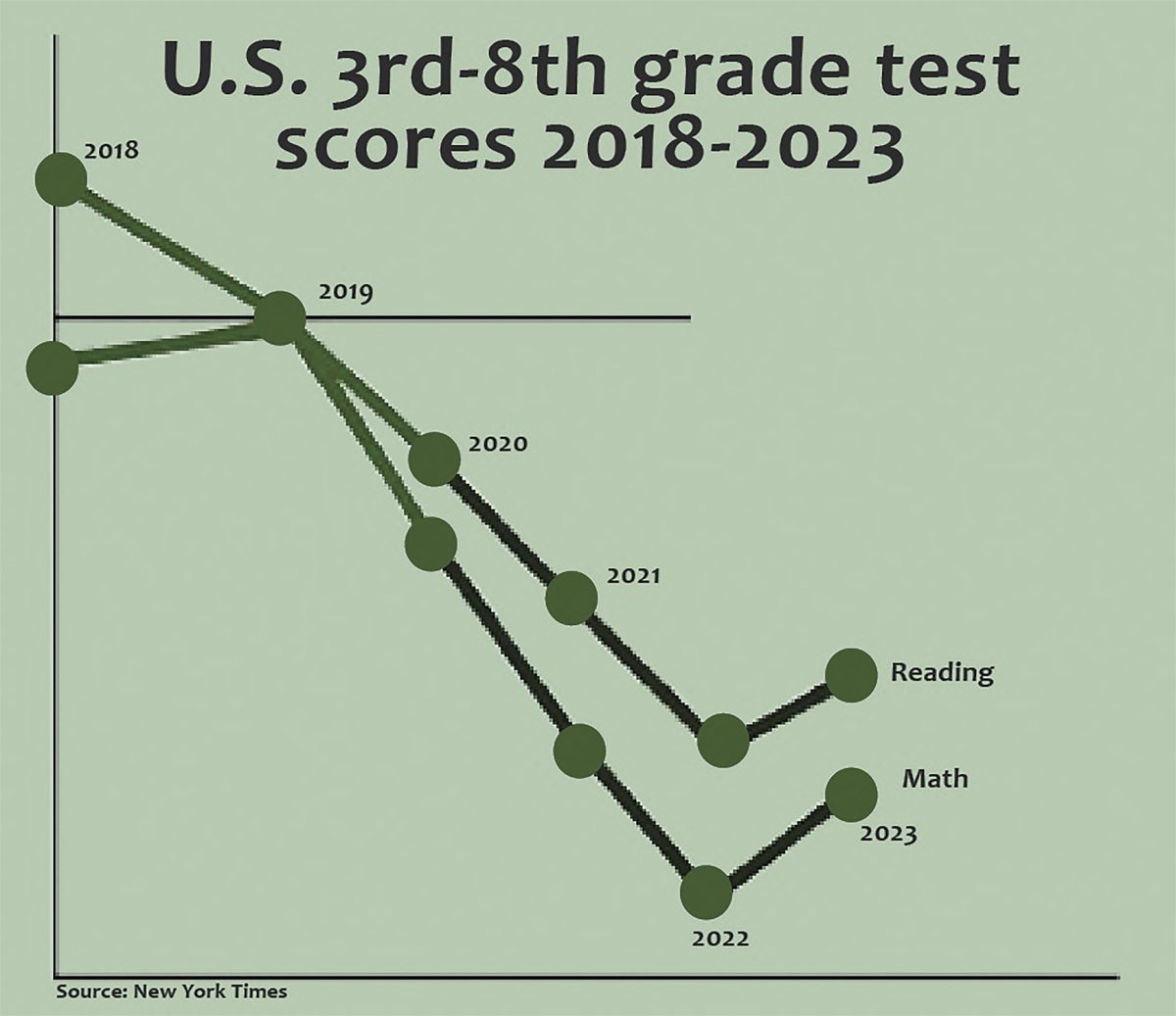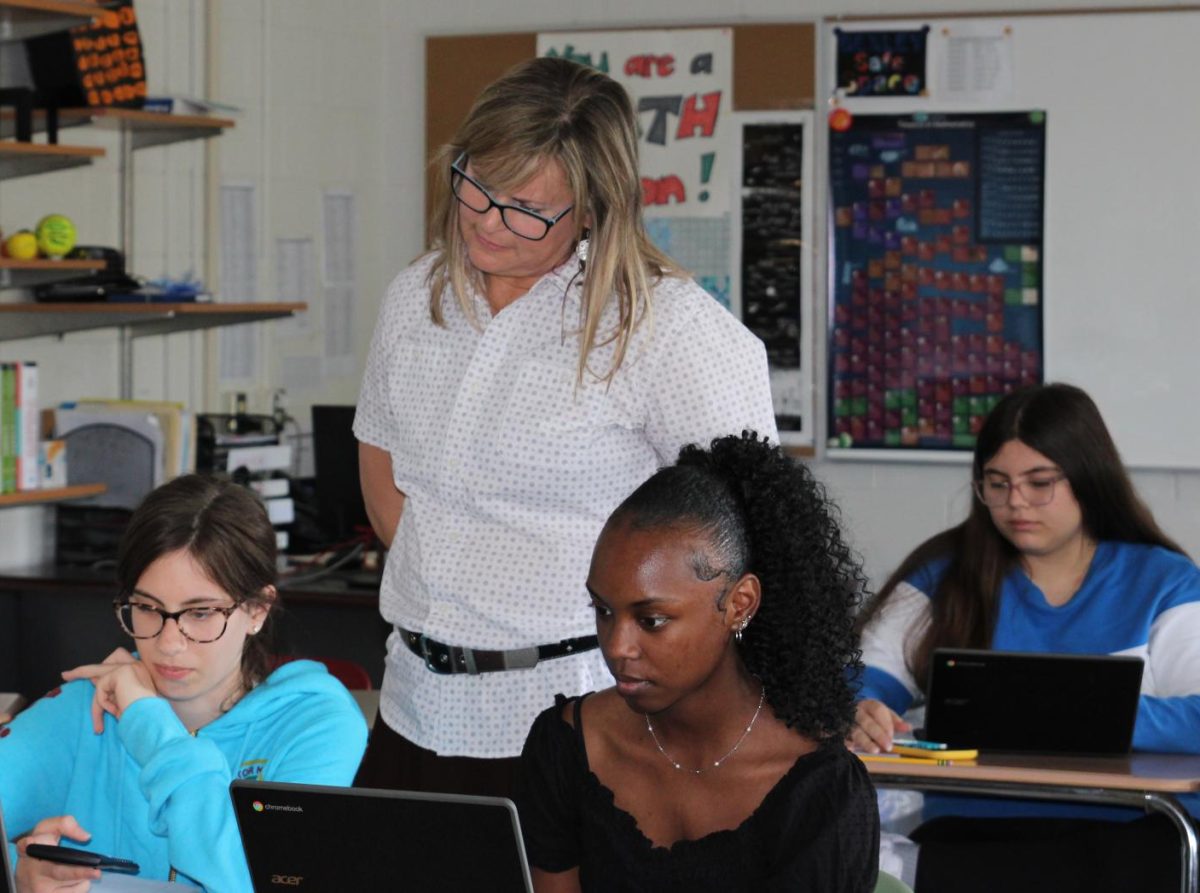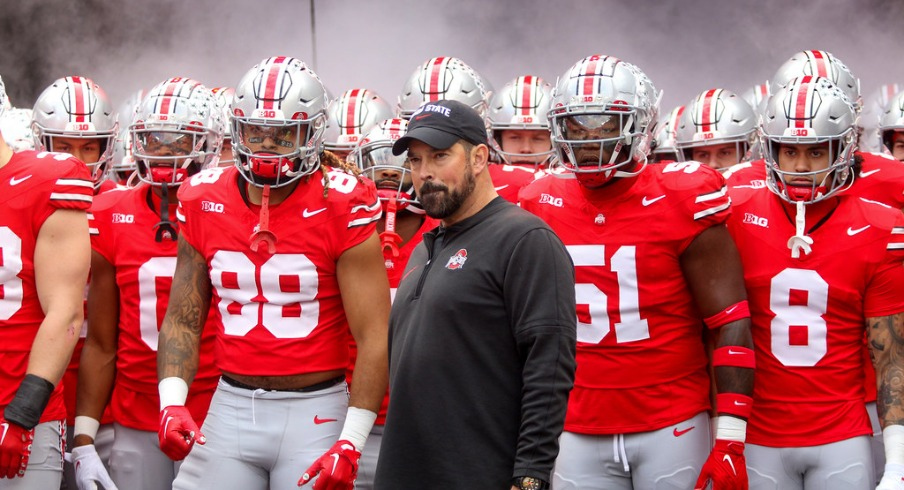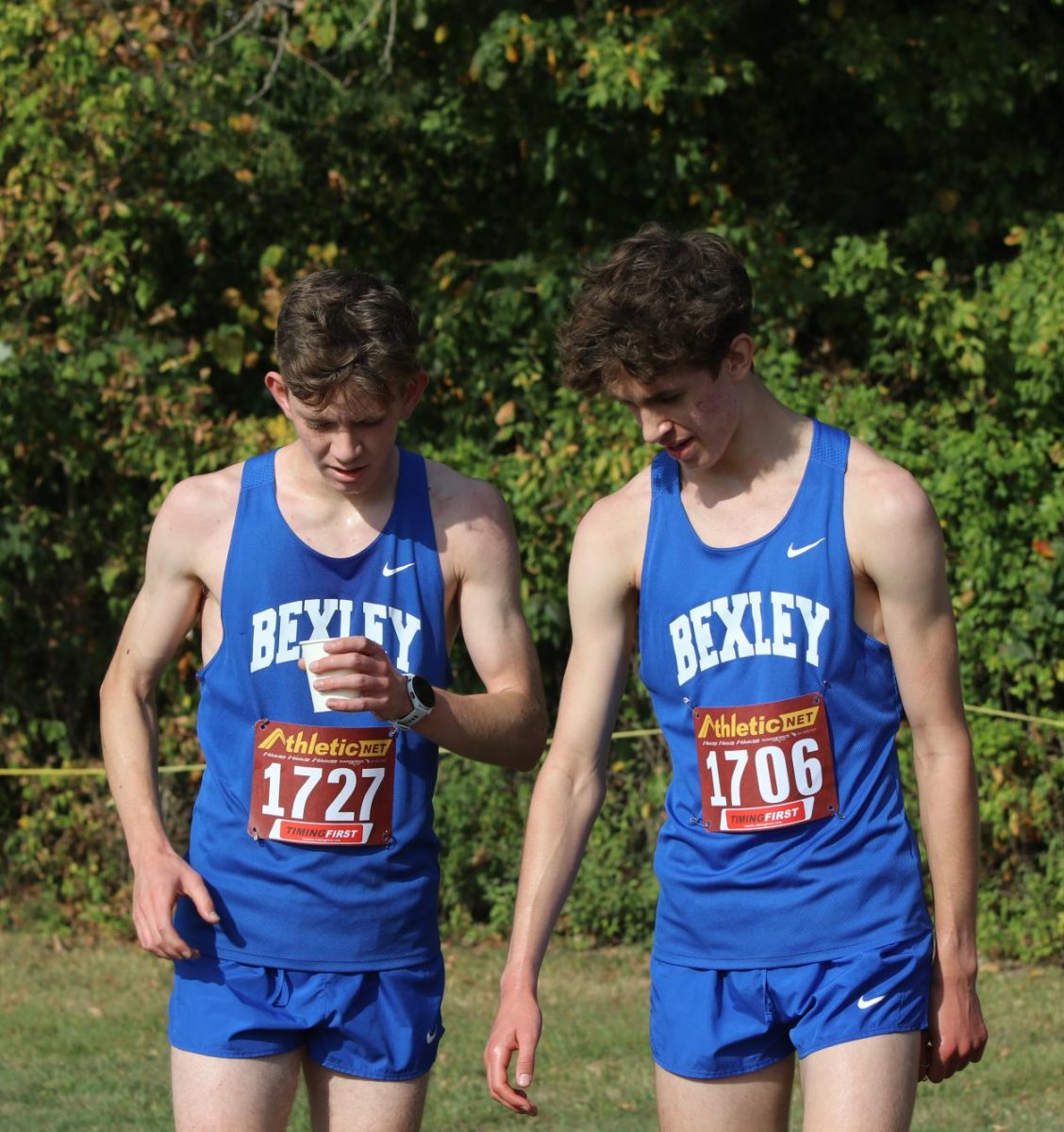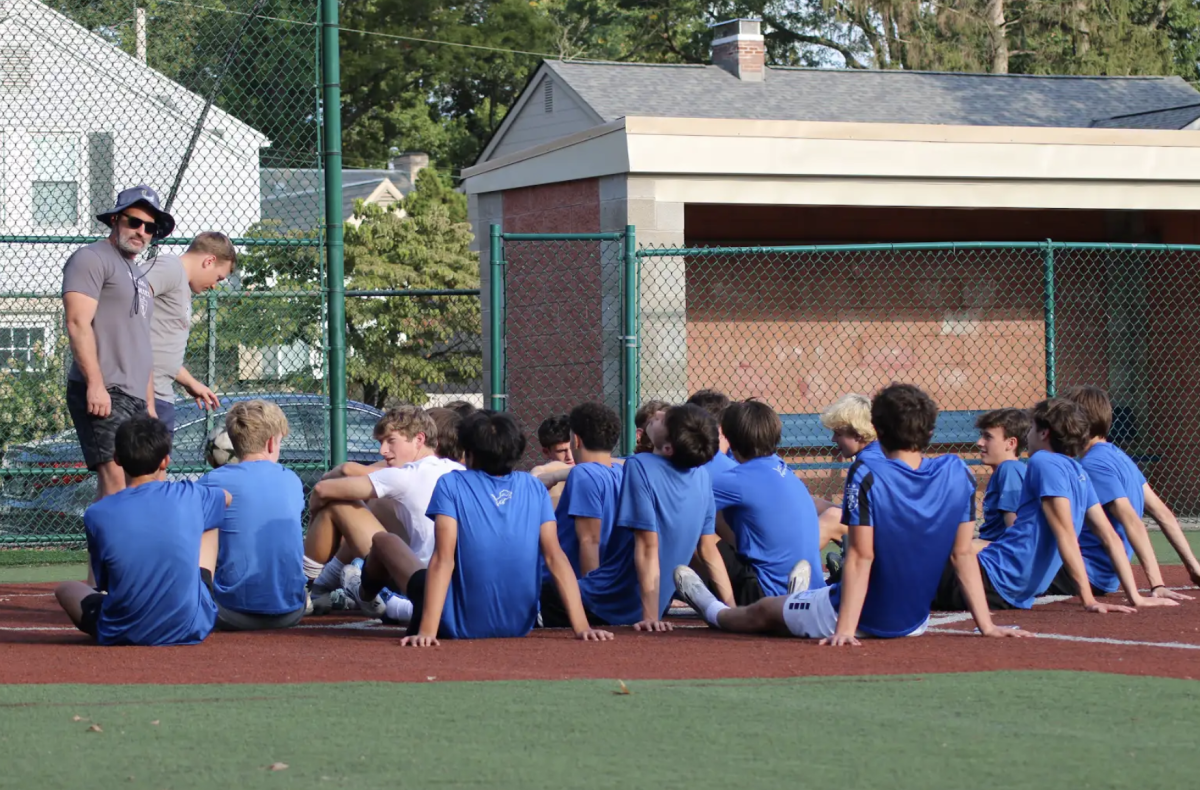Every day, beginning at 12:01, hundreds of Bexley High School students line up to buy the cafeteria’s food. Each student gradually progresses
through the line, picking and choosing their food items. They see the person serving them, and they might make friendly chit-chat with the cashier.
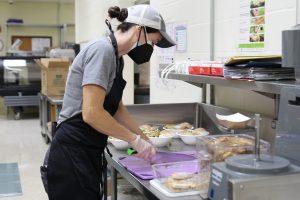
However, the kitchen and cafeteria operations are much more complicated than students who simply eat the food would be led to believe.
For many students, school is not only a place to learn—it is also where they eat the majority of their meals. The pandemic has made life more complicated for everyone, but how has the cafeteria coped with the challenges presented?
District food service director Julianna Carvi said that the lunchroom has had to adapt to the unique circumstances presented by COVID-19.
Before the pandemic, the cafeteria received deliveries from Gordon Food Service twice a week, Carvi said. Now, the kitchen only gets one big order for the week.
“There is less room for error now,” Carvi said. “I double and triple check I ordered the right things in the right quantity.”
The single shipment also rarely contains all the preferred ingredients, she added.
“Oftentimes, half the ingredients I want are not available, and I have to find substitutes,” she said.
Many of the substitutes do not meet government standards for nutrition, but they are simply the only products available, Carvi explained. She cited ranch cups as an example of the nutritional trade-offs that they have had to make. The ranch cups they now must use have much higher sodium and artificial preservative quantities than traditionally allowed.
“With the supply chain issues, we’ve really gone off the rails in terms of the guidelines,” she said. “Obviously, this is with the acknowledgement from the Department of Agriculture and Department of Education that schools are struggling to find food to feed the kids.”
Carvi still tries to stick to the regulations as best she can but said that sometimes, the rules must be broken.
“Sometimes you’re going to get a white hot dog bun instead of a whole wheat one,” she said.
Cook Kevin Brashear said he feels the biggest difficulty is keeping students masked in the cafeteria.
“I feel a part of my job is looking out for students,” he said. “There’s a fine line between staying masked in the lines and being unmasked while eating at your table.”
Brashear said he wishes there was better communication about eating in the cafeteria. He added that the staff is extremely worried about contracting COVID-19.
“I don’t want to get sick, because the staff is already stressed,” Brashear said.
The work hours for cafeteria staff were increased in anticipation of a rise in demand due to the implementation of the Universal Free Meals Program, Carvi explained. Last year, the United States Department of Agriculture allowed schools to serve free meals to all students via increased reimbursement rates and waivers on program requirements. The cafeteria can now accommodate the increase in meals bought because the staff has more time to work, she added.
According to statistics compiled by Carvi, the introduction of the Universal Free Meals program has led to a major rise in demand: in December of 2021, the number of lunches served to high school students increased by 43% compared to the same month in 2019. For the same time periods, the number of breakfasts served increased by 45%.
January has been especially difficult for the kitchen staff, Carvi said. On some days, five of the 15 staff members have been out due to COVID-19, surgery or child-care, she explained, leading to long and difficult work days. There is a lack of subs available, so they have involved other district employees, she added.
District business manager John Eikenberry was one of the individuals who helped when subs were not available.
“Public schools must provide access to food during the regular school day,” he said. “Dr. Harley Williams and I were simply doing our part to deliver the goal.”
Eikenberry also noted his first-hand experience witnessing the skill and efficiency it takes to effectively serve food to thousands of students.
“There is not another environment in the school district like the lunch serving line,” he explained. “Everything happens at warp speed, and our team of experts just flow like it’s easy peasy.”
One benefit of the increase in students eating at school, Carvi said, is that they now eat much healthier than if they went out to Main Street instead.
“I will put my whole grain tortilla with brown rice against a Chipotle burrito with 12,000 calories any day of the week,” she said.
Carvi also pointed out that staying on campus to eat allows students to stay socially connected and be on-time to class.
Despite the adversity and challenges the cafeteria staff has faced this year, she said she is happy to see more students eating at the school.
“I think it’s wonderful,” she said. “I love having the kids eat here and enjoying the meals that we prepare.”

